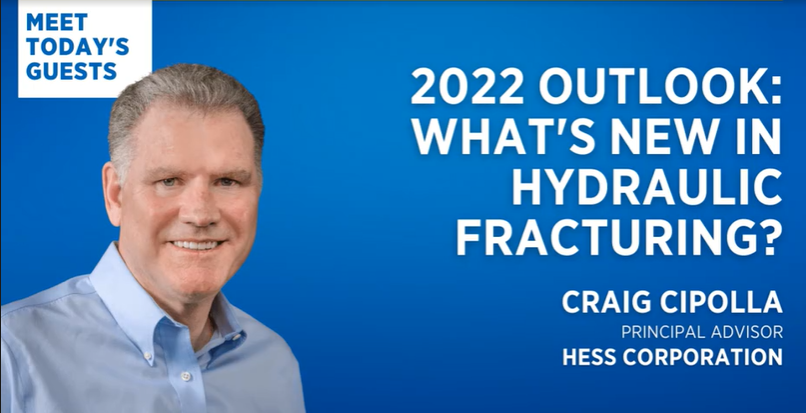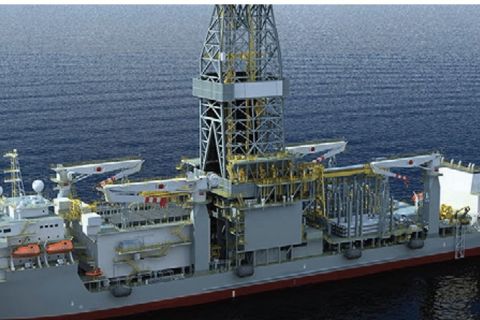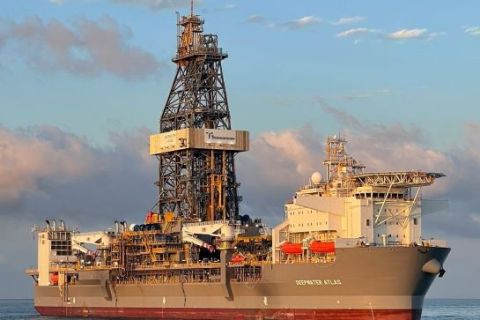Presented by:

This article appears in the E&P newsletter. Subscribe to the E&P newsletter here.
To stay ahead of the latest hydraulics trends, oil and gas operators need to know what to invest their time, money and energy into to remain competitive. What they are focusing on now is “pushing the envelope with some of the diagnostics” in terms of hydraulic fracturing evaluation, according to Jennifer Miskimins, head of the petroleum department with Colorado School of Mines.
Miskimins, who will serve as chair for the 2023 and 2024 SPE Hydraulic Fracturing Technology Conferences (HFTC), was joined by past and present chairs during SPE's recent "2022 Outlook: What's New in Hydraulic Fracturing?" webinar to discuss how new advances in fracturing would be addressed at the upcoming HFTC0.

“What I want to focus on is this extension of our diagnostics from what we focused on in the past—which has been what do hydraulic fractures look like, what’s their geometry, are they complex or are they plainer—to now a more recent focus on how the hydraulic fractures perform," said Craig Cipolla, principal adviser with Hess Corp. and current chair for the 2022 HFTC and prior 2021 chair. "It’s not a new thing, but it’s a new thing with the standpoint of all the detailed diagnostic measurements we’re seeing now."
With the help of far field measurements, like fiber, it can be understood how fractures grow in the far field, he added.
“What we’re seeing now is we’re seeing companies take the diagnostic data and build much more robust fracturing models integrated with reservoir simulation models that allow us to optimize hopefully much quicker and much more reliably than a computer as opposed to the drill bit,” Cipolla said.
Advanced diagnostics in the field will allow operators more transparency and a clearer understanding of their operations, Miskimins added.

“We’re starting to understand a lot more about what things like fiber are telling us, not just what measurements but what it really means. I think we’re seeing that coupled together with sealed wellbore pressure monitoring and some of those,” she said. “So to me, it’s really being able to have some views [on] downhole acoustic measurements, anything that starts to have a much more strong picture [of] what we’re actually seeing downhole—that really seems to be the new thing.”
Environmental impacts
The panelists also discussed the newest innovations regarding environmental protection and water recycling during nonconventional operations.
Martin Rylance, distinguished adviser for THREE60 Energy and former chair of 2019 and 2020 HFTC, remarked that the energy sector has made progress minimizing water usage and electrifying frac fleets, and he also addressed the need to examine the impact of saltwater disposal on the environment.
“It’s always good to be challenged, and almost every company is now examining their existing practice in all aspects of the logistics chain and execution chain and the use of materials and natural resources,” Rylance said.
There have been major advances in some of the decision-making and the energy that’s put in as well as the form of energy, he added.

“As always, industry is adapting and maximizing its learning and making progress in a number of these areas,” Rylance said. “All operators—responsible operators—are looking very carefully at how they can minimize their impact and head toward that net zero in different ways (net-zero impact on resources [and] net-zero impact on CO2) in support of a greener oil field.”
At the upcoming HFTC, there will be pre- and post-sessions as well as training opportunities for attendees to expand their knowledge on a variety of topics, including fiber optics, technical analysis, multistage completions and geomechanics. The conference will be held Feb. 1-3 in The Woodlands, Texas.
Recommended Reading
Seadrill Awarded $97.5 Million in Drillship Contracts
2024-01-30 - Seadrill will also resume management services for its West Auriga drillship earlier than anticipated.
Valaris Updates Fleet Status
2024-02-19 - The backlog of these contracts and extensions is valued at $1.2 billion.
Transocean Releases Fleet Status Report
2024-02-15 - Transocean’s total backlog for its fleet is approximately $9 billion.
E&P Highlights: April 8, 2024
2024-04-08 - Here’s a roundup of the latest E&P headlines, including new contract awards and a product launch.
E&P Highlights: March 4, 2024
2024-03-04 - Here’s a roundup of the latest E&P headlines, including a reserves update and new contract awards.





